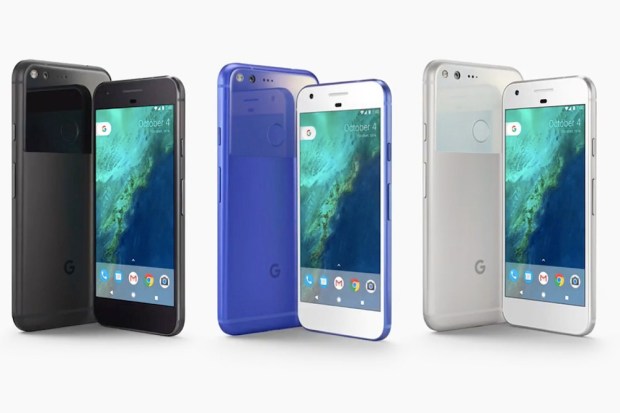Google’s Pixel Event: The Good, The Bad And The Weird

Whatever else one can say about the slew of products Google set loose yesterday at its big event in San Francisco — no one will ever say that Google did not think big enough, or that it has decided to wade into the wildly competitive world of devices by half-measure or two.
Nope, Google went big, rolling out its fancy new phone (with an accompanying fancy price-tag), its VR entry and its Echo competitor.
So what was seen — and what were the early reviews?
The Pixel Phone — The Day’s Headliner
Branded mostly accurately as Google’s first branded phone, the new Pixel certainly got a very big introduction to the wider world.
It looks a lot like an iPhone.
That was the most common observation across every media piece — and it is one that is a bit hard to argue with. From its physical appearance to various design touches in the operation — it is pretty clear that for whatever innovating Google wants to do with the phone form, it isn’t looking to make those changes in the aesthetics of a smart phone — they like Apple’s just fine.
They also apparently like Apple’s pricing model as well, as the base 32GB Pixel will run consumers $620, with a $100 upgrade to 128 GB possible. But that is a choice that has to be from the outset because, also like iPhones, the Pixel doesn’t have a microSD slot that makes storage easier to upgrade on the back end. The larger Pixel XL starts at $769 for 32 GB and goes up to $869 for 128 GB. This is something of a departure from the former Nexus model, where the phones were billed as a more affordable smartphone alternative to the dominant iPhone — though as of the release of the Nexus 6, that has already become less the case.
But the phone did net a fair amount of praise — particularly for its screen display, which many reviewers noted is, as advertised, capable of actually being a screen display for the Daydream View VR headset. Also netting praise are the quick-charging technology that allows the phones to run for over 7 hours on 15 minutes of charge (though the loss of wireless charging was bemoaned) and the 12.3 megapixel camera.
The most lauded upgrade, however, was Google Assistant, available with a long press of the on-screen home button.
Like Siri, when asked questions it provides answers (somewhat more reliably than Siri does, according to some reviews) and also will automatically complete actions when asked (“open Kim Kardashian’s Instagram account” will take a user directly there) — and because it is baked directly into the Android core, it is also capable of “reading” the current screen open to predict what action the user might like to take next. Also, every photo and video shot on a Pixel phone is automatically uploaded to the cloud via the Google Photos app, in full resolution.
Daydream (Best Supporting Player)
Not only showing off the phones, Google also introduced the virtual reality headset for mobile devices — Daydream View. The viewer holds a smartphone, while the user has a hand-held remote to control what’s happening on screen. It works best with the Pixel phones – and at launch it works only with Pixel phones. But according to Google’s Clay Bavor, that will soon change as Google is already exploring partnerships that will make the devices more interoperable.
Daydream is actually a more cost efficient VR option than the $599 Oculus Rift or $799 HTC Vive — but it isn’t exactly a directly competing product either. The Rift and the Vive are fully immersive VR experiences favored by serious gamers. They require a PC. The Daydream seems more directly aimed at casual users who are already using Nougat powered Android smartphones, and it is priced for that less hardcore market at $79. That makes it a more direct competitor for the Samsung Gear VR headset ($99), built for Samsung Galaxy devices and powered by Oculus.
The applications are also more directed to general entertainment VR users – Daydream launches with 50 partners and a slew of games and is working with Warner Brothers to bring immersive environments to the device. The headset will also support Netflix, HBO and Hulu.
Google Home (The Potential Sleeper Hit)
The most consistently positively reviewed part of the day was the pre-launch of the Google Home product. First previewed last spring, the device was touted as the potentially very effective competitor for Amazon’s Echo.
To start, the device is priced at $129 — about $50 cheaper than the Amazon Echo (though more than the recently released Echo Dot). Google Home also acts as a slightly more impressive data receptacle than Alexa — as it is able to use the 70 billion facts the company has logged throughout the years. It also comes loaded with Google Assistant — which means it can search for answers, schedules meetings, adjust your calendar and control smart home devices (as long as they are partnered). And, like on Google Now and Android, “OK, Google” activates the show.
So will Google take over hardware? Well, it probably shouldn’t quit its day job as software and search — but its devices have promise.
But then, the Amazon Fire phone had promise too. And we all know how that turned out.
